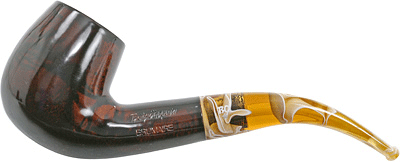Since time
immemorial, amber has been worn as an amulet in the Baltic as well as the
Mediterranean cultures. The people of these cultures believed amber was
especially beneficial for protecting infants from the croup when worn as a
necklace in the form of an amulet. As a charm, amber was believed to ward of
fits, dysentery and nervous afflictions. As early as Pliny’s time, farmers
wives in areas where the “water had properties that would harm the throat”, or
was deficient in iodine, wore raw amber beads around their necks as a remedy
against swellings (goiter).
 |
| raw baltic amber butterscotch beads |
The lore
attributing guardian values to amber has lasted into the 20th
century. During the late 1960s, for example, an authority announced the virtues
of wearing amber beads around the throat to protect it from diseases. It was
believed that the strong electrical properties of amber resulted in an
electrical band forming around the throat and bringing into existence a
protective power. Even today, in many of the peasant areas of the Baltic, amber
earrings and necklaces are worn when one has a headache or a throat ailment.
Amber is
thought to possess other unusual curative powers. In ancient times, amber was
powdered and mixed with honey and oil-of-roses for curing ear troubles. When
mixed with honey from Attica, it was a cure
for dimming eyesight. The powder was taken internally as a remedy of diseases
of the stomach, whereas the amber oil was prescribed for internal
administrations of asthma and whooping cough. Simply holding a ball of amber in
the hands not only kept one cool during the hottest days of summer, but would
reduce the temperature of a person from fever.
 |
| yellow lemon amber nugget |
Many
prescriptions were written which included amber along with other gemstones. An
old meteria medica lists 200
medicinal stones. A dose suggested for heart disease contained white amber, red
coral, crab’s eyes, powdered hartshorn, pearls and black crab’s claws. Such a
mixture was the prized Oriental Bezoar, prescribed for different ailments.
Amber was
also used externally as a fumigation to cure other ailments, including
tonsillitis, catarrh, or running nose and eyes. It was thought that the smell
of burned amber helped women in labor. In the Orient, amber fumigation was
accomplished by throwing powdered amber on a hot brick. The fumes would
strengthen the individual and give him courage from the soul of the tiger, a
beast second in importance only to the dragon in Chinese mythology. “Syrup of
amber”, a mixture of liquid acid-of-amber and opium, was also used in China as a
sedative, anodyne and antispasmodic drug. Powdered amber and oil-of-amber were
prescribed as powerful diuretics.
 |
| powdered Baltic amber |
A piece of
amber placed on the nose was thought to stop excessive bleeding. It is perhaps
this belief in the special blood-stilling or coagulating properties of amber
that explains the use of an amber handle on the ritual Jewish circumcision
knife of the 18th century. During the early 1900’s, as medical
practices advanced, vessels made of compressed amber were used during blood
transfusion. The amber, being a poor conductor of heat, kept a more constant
blood temperature for a longer period of time that did glass or stone vessels,
and thus the blood was kept from coagulating.
The
persistent belief that amber not only prevented infections, but acted as a
charm against them, was the reason amber retained its popularity into the late
1800s and early 1900s, especially in the smoking articles industry. Its
employment as a mouthpiece for cigars, cigarettes and pipes was originally
talismanic. Amber was used in the Middle East
for the mouthpieces of hookahs with their many hoses because of the gemstone’s
supposed germicidal effect.
 |
| Butz-Choquin Brumaire pipe in amber |



